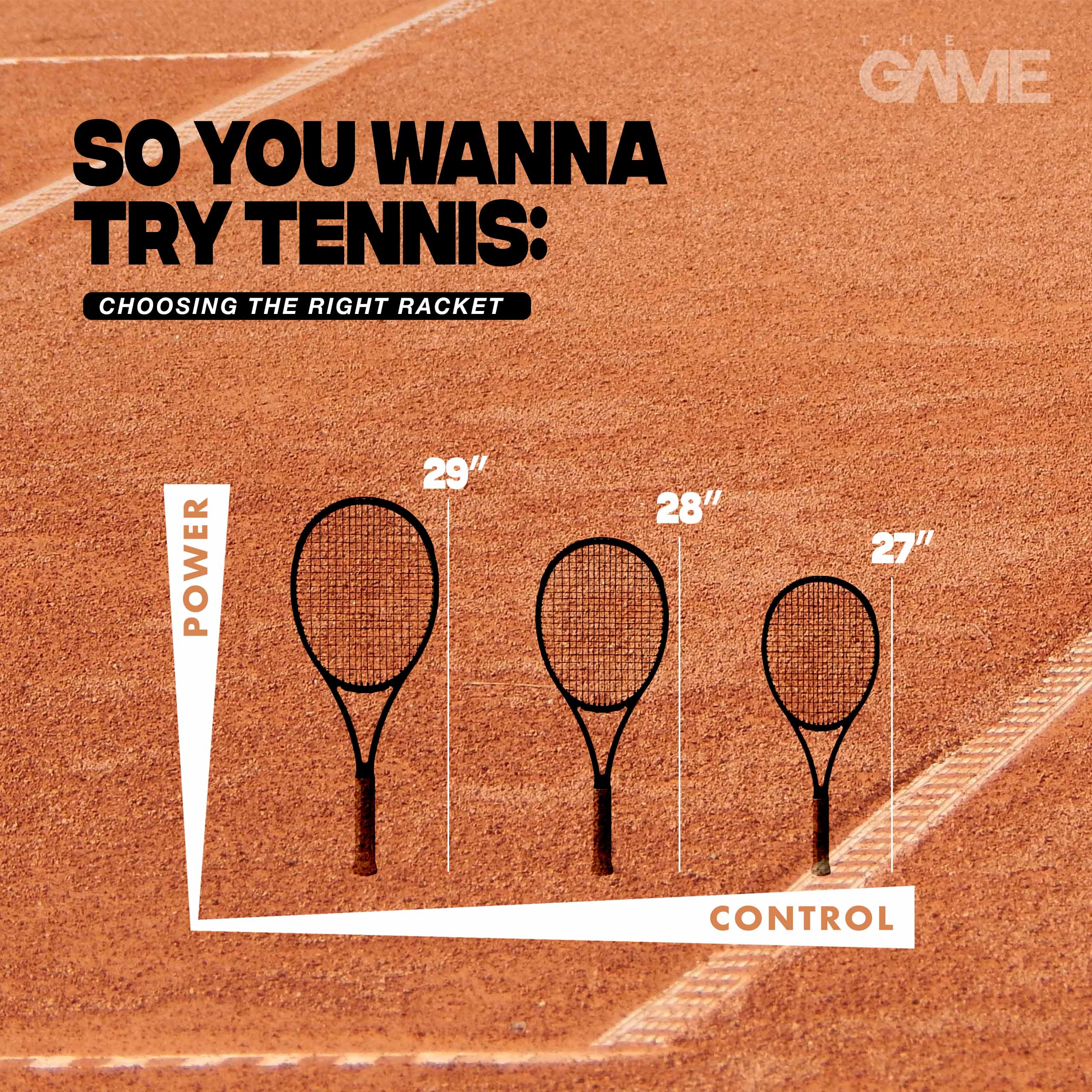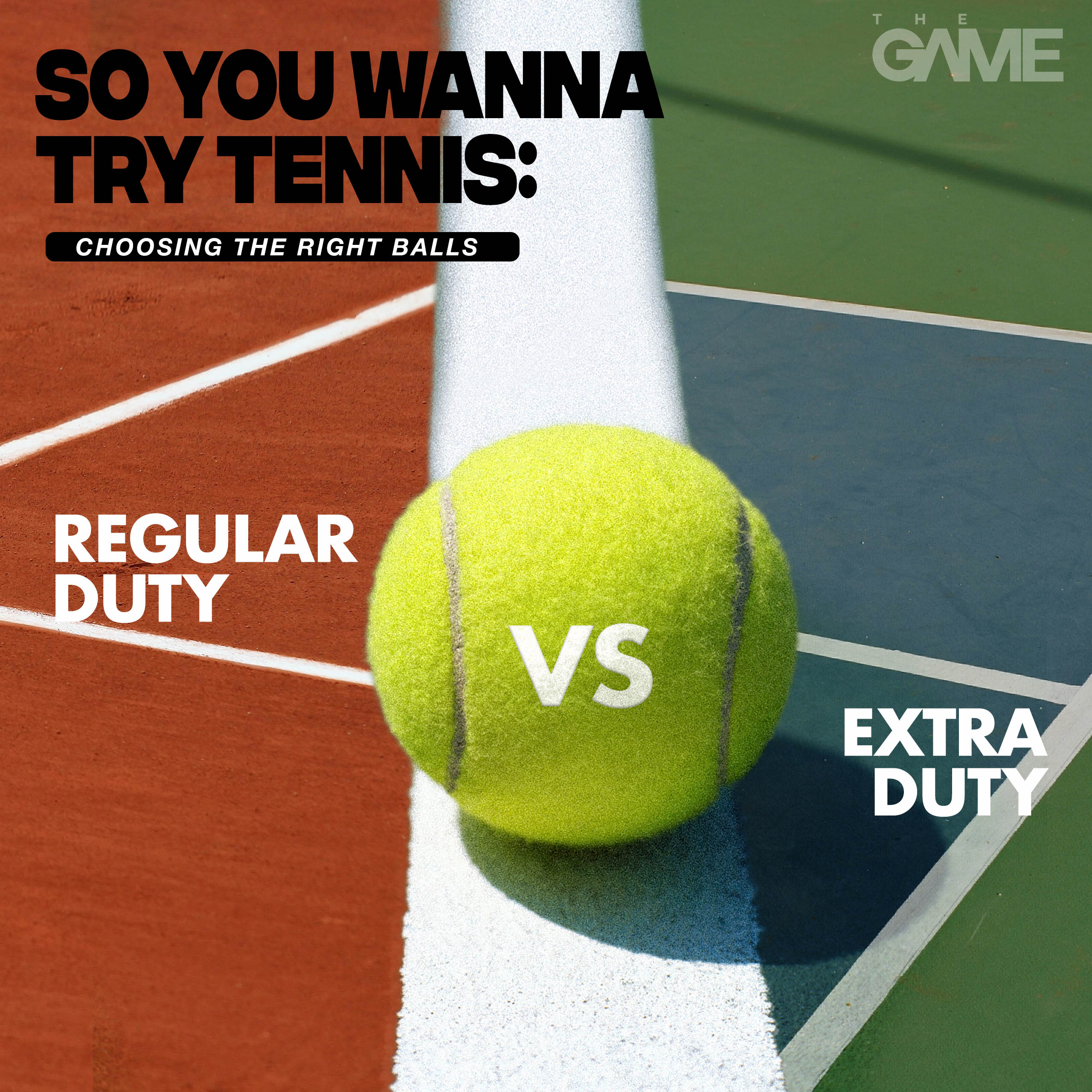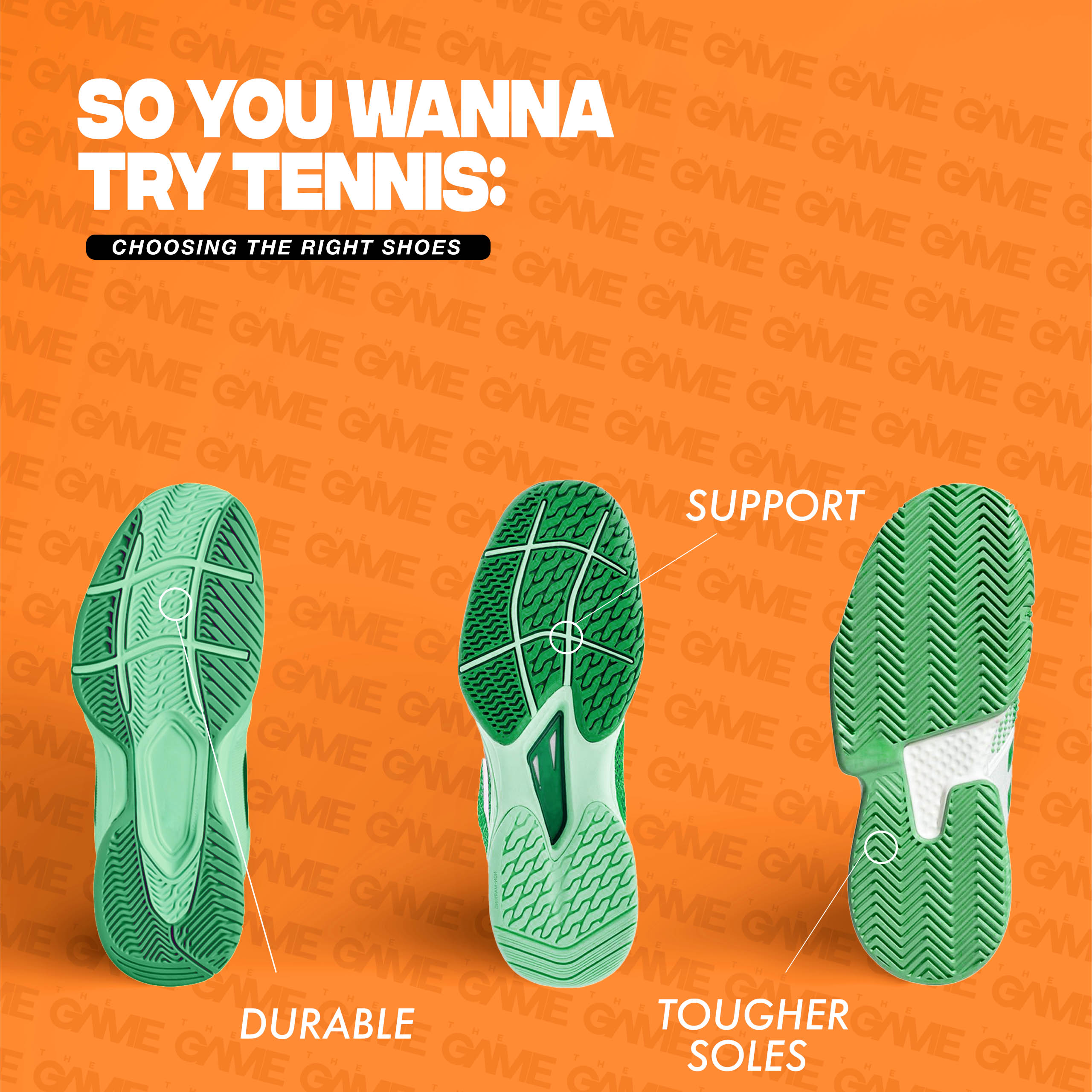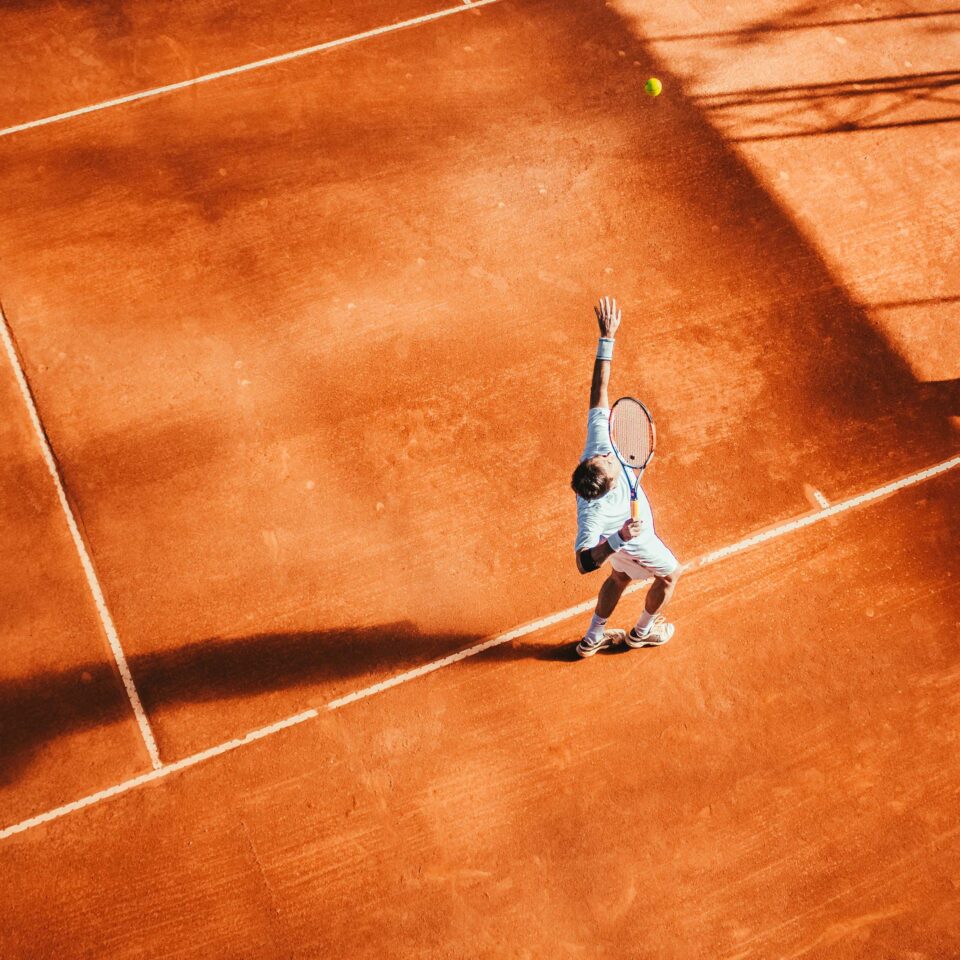So you wanna try tennis? The Game’s got your back. Get to know about the essentials to playing your best game right here.
No matter your age, tennis is one of the best recreational sports out there, and for good reason. It’s accessible, it’s relatively easy to learn, and it doesn’t take much to start.
But, even though tennis seems to be as simple as pick-up-your-racket-and-go, there are actually a few things you might want to consider before hitting the court. We’re here to break it down for you.
Choosing a tennis racket
The most obvious decision you’re going to make when starting your tennis journey is choosing your racket. While there are a lot of different brands to browse through, your best option will simply be what feels best for you. As a beginner, one of the basic things you’ll want to consider will be its size (yes, size matters in tennis).

The standard racket most players use for a full-court is the 27-inch. This is a good place to start for beginners. And while you can go for longer, keep this in mind: that extra inch or two might give you more power from your swings, but you’ll also have less control. Bigger doesn’t always mean better.
At the end of the day, when looking for the racket that best suits you, you’re just going to have to get on the court and feel it out.
What about the balls?
You might think all tennis balls are the same, but actually, there are a few technical differences between the types. As a beginner, you only really need to worry about two: Regular Duty and Extra Duty.

When shopping for your balls, consider the kind of court you plan to play on most often. If you’re playing on a hard court surface, go for Extra Duty. Hard courts put more pressure on the balls. The tougher felt here will allow them to perform better and last longer.
For softer surfaces, like clay courts and some indoor courts, go for the Regular Duty. On these surfaces, your balls move slower because the court will absorb some of their momentum. Your Regular Duty balls stay compact for a longer time, helping them retain speed.
Starting with the right kind of tennis balls will help you sustain momentum as you master all the basics.
Sorry, your running shoes won’t cut it
On the court, you’re constantly going to be shuffling back and forth, side to side, moving in quick bursts. Running shoes and most basic sneakers are generally designed for forwarding motions and unfortunately, don’t provide enough support for chasing after balls.
Tennis shoes are designed with tougher soles to protect all the edges of your feet. And especially for a beginner, trust us, you’ll want all the extra support you can get as you’re learning how to move through the court.

Though this may be a lot to consider, don’t overthink it. As a beginner, you’re probably not going to feel the differences between the technicalities all that much. But, if you’re going to start, you might as well give yourself the best shot at becoming the next Rafael Nadal (we can dream, right?).
Banner photo by Moises Alex on Unsplash.
